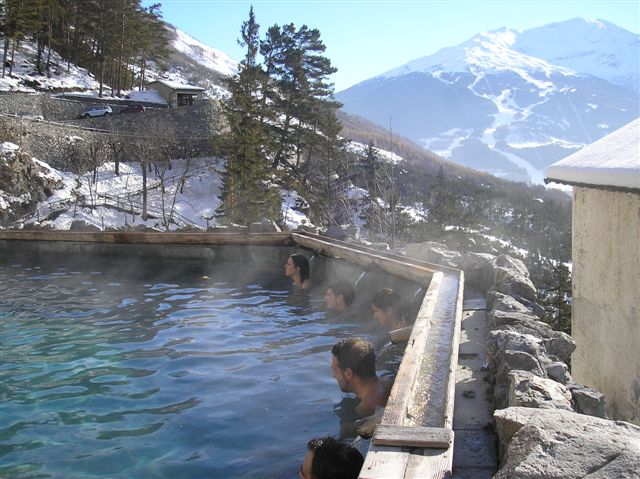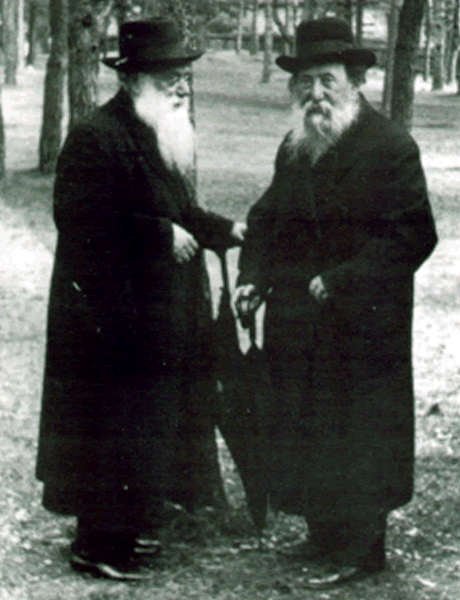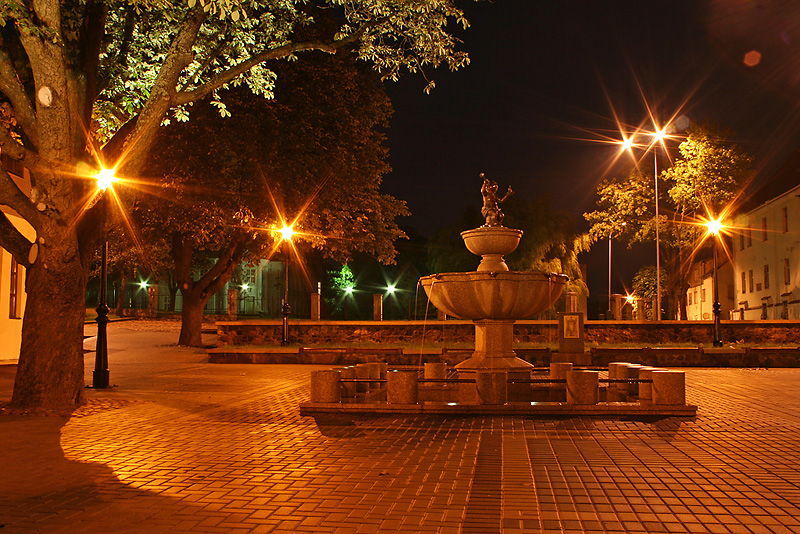|
Elchonon Wasserman
Elchonon Bunim Wasserman ( he, אלחנן בונים וסרמן; 18746 July 1941) was a prominent rabbi and rosh yeshiva (dean) in prewar Europe. He was one of the closest students of Yisrael Meir Kagan (the Chofetz Chaim) and a noted Talmid Chacham. In the interwar period, he served as rosh yeshiva of Yeshiva Ohel Torah-Baranovich. He was murdered during the Holocaust. Early life and education Elchonon Bunim Wasserman was born in 1874 in Biržai (Birz) in present-day Lithuania to Naftali Beinish, a shopkeeper and Sheina Rakhel.Weekly Biography: Hagaon Harav Elchanan Wasserman Hy"d, ''Hamodia''; 9 July 2008; pg. C3 In 1890, the family moved to Bauska (Boisk) in present-day Latvia, and Wasserman, then 15 years old, studied in the Telshe Yeshiva in Telšiai (Telz) under Eliezer Gordon and Shimon Shkop. When Wasserman returned home during vacation, he participated in classes given by Abraham Isaac Kook, who was appointed rabbi of Bauska in 1895. In the summer of 1897, Wasserman m ... [...More Info...] [...Related Items...] OR: [Wikipedia] [Google] [Baidu] |
Rosh Yeshiva
Rosh yeshiva ( he, ראש ישיבה, pl. he, ראשי ישיבה, '; Anglicized pl. ''rosh yeshivas'') is the title given to the dean of a yeshiva, a Jewish educational institution that focuses on the study of traditional religious texts, primarily the Talmud and the Torah, and ''halakha'' (Jewish law). The general role of the rosh yeshiva is to oversee the Talmudic studies and practical matters. The rosh yeshiva will often give the highest '' shiur'' (class) and is also the one to decide whether to grant permission for students to undertake classes for rabbinical ordination, known as '' semicha''. The term is a compound of the Hebrew words ''rosh'' ("head") and ''yeshiva'' (a school of religious Jewish education). The rosh yeshiva is required to have a comprehensive knowledge of the Talmud and the ability to analyse and present new perspectives, called '' chidushim'' ( novellae) verbally and often in print. In some institutions, such as YU's Rabbi Isaac Elchanan Theological ... [...More Info...] [...Related Items...] OR: [Wikipedia] [Google] [Baidu] |
Hamodia
''Hamodia'' ( he, המודיע – "''the Informer''") is a Hebrew-language daily newspaper published in Jerusalem. A daily English-language edition is also published in the United States, and weekly English-language editions in England and Israel. A weekly edition for French-speaking readers debuted in 2008. The newspaper's slogan is "The Newspaper of Torah Jewry". It comes with two magazines, ''Inyan'' and ''Prime''. ''Haaretz'', the newspaper of Israel's secular left, describes ''Hamodia'' as one of the "most powerful" newspapers in the Haredi community. History ''Hamodia'' was founded in 1950 by Rabbi Yehuda Leib Levin, son of the Agudat Israel leader Rabbi Yitzhak-Meir Levin of Warsaw and Jerusalem. Its current director general is Rabbi Chaim Moshe Knopf, and its deputy director general is Knopf's son, Rabbi Elazar Knopf. English-language edition The English-language edition of ''Hamodia'' is published by Levin's daughter, Ruth Lichtenstein. It was first printed on Februa ... [...More Info...] [...Related Items...] OR: [Wikipedia] [Google] [Baidu] |
Meir Atlas
Meir Atlas ( he, מאיר אטלס; 1848–1926) was the rabbi of numerous communities in pre-World War II Europe and one of the founders of the Telz Yeshiva. He was an outstanding halachic authority who authored many responsa and was one of the foremost Lithuanian rabbis of his time. Biography Rabbi Meir Atlas was born in 1848 in Baisagola, Lithuania. In 1875, together with Rabbi Zvi Yaakov Oppenheim, Rabbi Shlomo Zalman Abel and the help of a German Jewish layman, Ovadyah Lachman, Atlas founded the Telz Yeshiva in Telz, Lithuania. He later served as rabbi and spiritual leader in a number of cities, including Libau in Latvia, Salant in Lithuania, and Kobryn in Belarus Belarus,, , ; alternatively and formerly known as Byelorussia (from Russian ). officially the Republic of Belarus,; rus, Республика Беларусь, Respublika Belarus. is a landlocked country in Eastern Europe. It is bordered by .... In 1904, Rabbi Atlas was appointed rabbi to the com ... [...More Info...] [...Related Items...] OR: [Wikipedia] [Google] [Baidu] |
Rebbe
A Rebbe ( yi, רבי, translit=rebe) or Admor ( he, אדמו״ר) is the spiritual leader in the Hasidic movement, and the personalities of its dynasties.Heilman, Samuel"The Rebbe and the Resurgence of Orthodox Judaism."''Religion and Spirituality (Audio)''. UCTV, 20 Oct 2011. web. 31 Jul 2013. The titles of Rebbe and Admor, which used to be a general honor title even before the beginning of the movement, became, over time, almost exclusively identified with its Tzaddikim. Terminology and origin Usage Today, ''rebbe'' is used in the following ways: # Rabbi, a teacher of Torah – Yeshiva students or ''cheder'' (elementary school) students, when talking to their teacher, would address him with the honorific ''Rebbe'', as the Yiddish-German equivalent to the Hebrew word ''rabbi'' ( ' ). # Personal mentor and teacher—A person's main Rosh Yeshiva, Yeshiva teacher, or mentor, who teaches him or her Talmud and Torah and gives religious guidance, is referred to as ''rebbe'' ... [...More Info...] [...Related Items...] OR: [Wikipedia] [Google] [Baidu] |
Belarus
Belarus,, , ; alternatively and formerly known as Byelorussia (from Russian ). officially the Republic of Belarus,; rus, Республика Беларусь, Respublika Belarus. is a landlocked country in Eastern Europe. It is bordered by Russia to the east and northeast, Ukraine to the south, Poland to the west, and Lithuania and Latvia to the northwest. Covering an area of and with a population of 9.4 million, Belarus is the 13th-largest and the 20th-most populous country in Europe. The country has a hemiboreal climate and is administratively divided into seven regions. Minsk is the capital and largest city. Until the 20th century, different states at various times controlled the lands of modern-day Belarus, including Kievan Rus', the Principality of Polotsk, the Grand Duchy of Lithuania, the Polish–Lithuanian Commonwealth, and the Russian Empire. In the aftermath of the Russian Revolution in 1917, different states arose competing for legitimacy amid the ... [...More Info...] [...Related Items...] OR: [Wikipedia] [Google] [Baidu] |
Brest-Litovsk
Brest ( be, Брэст / Берасьце, Bieraście, ; russian: Брест, ; uk, Берестя, Berestia; lt, Brasta; pl, Brześć; yi, בריסק, Brisk), formerly Brest-Litovsk (russian: Брест-Литовск, lit=Lithuanian Brest; be, links=no, translit=Berastze Litouski (Berastze), Берасце Літоўскі (Берасце); lt, links=no, Lietuvos Brasta; pl, links=no, Brześć Litewski, ), Brest-on-the-Bug ( pl, links=no, Brześć nad Bugiem), is a city (population 350,616 in 2019) in Belarus at the border with Poland opposite the Polish city of Terespol, where the Bug and Mukhavets rivers meet, making it a border town. It is the capital city of the Brest Region. Brest is a historical site for many cultures, as it hosted important historical events, such as the Union of Brest and Treaty of Brest-Litovsk. Furthermore, the Brest Fortress was recognized by the Soviet Union as a Hero Fortress in honour of the defense of Brest Fortress in June 1941 ... [...More Info...] [...Related Items...] OR: [Wikipedia] [Google] [Baidu] |
Health Resort
A destination spa or health resort is a resort centered on a spa, such as a mineral spa. Historically, many such spas were developed at the location of natural hot springs or mineral springs; in the era before modern biochemical knowledge and pharmacotherapy, "taking the waters" was often believed to have great medicinal powers. Even without such mystic powers, however, the stress relief and health education of spas also often has some degree of positive effect on health. Typically, over a seven-day stay, such facilities provide a comprehensive program that includes spa services, physical fitness activities, wellness education, healthy cuisine, and special interest programming. Some destination spas offer an all-inclusive program that includes facilitated fitness classes, healthy cuisine, educational classes and seminars, as well as similar to a beauty salon or a day spa. Guests reside and participate in the program at a destination spa instead of just visiting for a treatment ... [...More Info...] [...Related Items...] OR: [Wikipedia] [Google] [Baidu] |
Chaim Soloveitchik
Chaim (Halevi) Soloveitchik (Yiddish: חיים סאָלאָווייטשיק, pl, Chaim Sołowiejczyk), also known as Reb Chaim Brisker (1853 – 30 July 1918), was a rabbi and Talmudic scholar credited as the founder of the popular Brisker approach to Talmudic study within Judaism. He is also a member of the Soloveitchik dynasty, as the son of the Beis HaLevi. He is also known as the Gra"ch (Hebrew: גר״ח), an abbreviation of "HaGaon Reb Chaim." Biography Soloveitchik was born in Volozhin on March 25, 1853, where his father, Rabbi Yosef Dov Soloveitchik served as a lecturer in the famous Volozhiner Yeshiva. Prior to his birth, Soloveitchik's father was passed for the position of '' Rosh yeshiva'' at the Volozhiner Yeshiva, in favor of Naftali Tzvi Yehuda Berlin in 1854, ultimately resulting in their family moving away from Volozhin. After a few years, his father was appointed as a rabbi in Slutzk, where young Chaim was first educated. While still a youngster, his geniu ... [...More Info...] [...Related Items...] OR: [Wikipedia] [Google] [Baidu] |
Abraham Isaac Kook
Abraham Isaac Kook (; 7 September 1865 – 1 September 1935), known as Rav Kook, and also known by the acronym HaRaAYaH (), was an Orthodox rabbi, and the first Ashkenazi Chief Rabbi of British Mandatory Palestine. He is considered to be one of the fathers of religious Zionism and is known for founding the Mercaz HaRav Yeshiva. Biography Childhood Kook was born in Griva (also spelled Geriva) in the Courland Governorate of the Russian Empire in 1865, today a part of Daugavpils, Latvia, the oldest of eight children. His father, Rabbi Shlomo Zalman Ha-Cohen Kook, was a student of the Volozhin yeshiva, the "mother of the Lithuanian yeshivas", whereas his maternal grandfather was a follower of the Kapust branch of the Hasidic movement, founded by the son of the third rebbe of Chabad, Rabbi Menachem Mendel Schneersohn. His mother's name was Zlata Perl. He entered the Volozhin Yeshiva in 1884 at the age of 18, where he became close to the '' rosh yeshiva'', Rabbi Naftali Z ... [...More Info...] [...Related Items...] OR: [Wikipedia] [Google] [Baidu] |
Shimon Shkop
Shimon Yehuda Shkop ( he, שמעון שקופ; 1860 – October 22, 1939) was a rosh yeshiva (dean) of the Yeshiva of Telshe and then of Yeshiva Shaar HaTorah of Grodno, and a Talmid Chacham (Talmudic scholar). Early life Shkop was born in Torez, today in Belarus, in 1860. At the age of twelve he went to study in the Mir Yeshiva for two years. He then traveled to the Volozhin yeshiva where he studied with Naftali Zvi Yehuda Berlin for six years. His study partners included Chaim Ozer Grodzinski. Telz and Grodno Shkop married a niece of Eliezer Gordon, and in 1884 was appointed a rosh mesivta at Telz Yeshiva, where he remained for 18 years. While there, he developed a system of Talmudic study which became known as the "Telz way of learning." In 1903, he became rabbi of Moltsh, and in 1907 of Bransk. Among his students in Moltsh was Yechezkel Sarna, who studied under Shkop for a year in 1906, before leaving to the Slabodka yeshiva when Shkop himself left. From 192 ... [...More Info...] [...Related Items...] OR: [Wikipedia] [Google] [Baidu] |
Eliezer Gordon
Eliezer Gordon ( he, אליעזר גוֹרְדוֹן; 1841–1910) also known as Reb Laizer Telzer (), served as the rabbi and ''rosh yeshiva'' of Telz, Lithuania. Early years Eliezer Gordon was born in 1841 in the village of Chernyany (or Čarniany), Belarus, near Vilna. His father, Avrohom Shmuel Gordon, was a student of Chaim of Volozhin. As a youngster, he studied in the Zaretza Yeshiva in Vilna, later transferring to the Yeshiva of Yisroel Salanter at the Kovno kollel yeshiva in Kovno. Concurrent outstanding fellow students included Yitzchak Blazer, Simcha Zissel Ziv, Naftali Amsterdam, Yerucham Perlman and Jacob Joseph. Salanter realized that Gordon had great potential and appointed him as a maggid shiur in the yeshiva at a young age. After his father-in-law's death, Gordon succeeded the latter as rabbi of Kovno — but he only stayed for three months. On Tuesday, 24 March (6th Nissan) 1874, Gordon took over the position of Chief Rabbi at Kelm, where he remaine ... [...More Info...] [...Related Items...] OR: [Wikipedia] [Google] [Baidu] |
Telšiai
Telšiai (; Samogitian: ''Telšē'') is a city in Lithuania with about 21,499 inhabitants. It is the capital of Telšiai County and Samogitia region, and it is located on the shores of Lake Mastis. Telšiai is one of the oldest cities in Lithuania, probably dating earlier than the 14th century. Between the 15th and 20th centuries, Telšiai became a district capital and between 1795 and 1802 it was included in the Vilnius Governorate. In 1873, Telšiai was transferred to the Kovno Governorate. Names The name Telšiai is a variant of the same Lithuanian language root (''-telš-'', ''-tilž-'') as Tilžė with the meaning connected to water. The name Telšiai or Telšē in Samogitian dialect of Lithuanian is derived from a verb ''telkšoti'' (literally, ''to be flooded with water'', ''to splash'', etc.). The name of Telšiai has been recorded in different forms and different languages throughout its history. Most of them are derived from ''Telšē'' in Samogitian dialect. Som ... [...More Info...] [...Related Items...] OR: [Wikipedia] [Google] [Baidu] |





